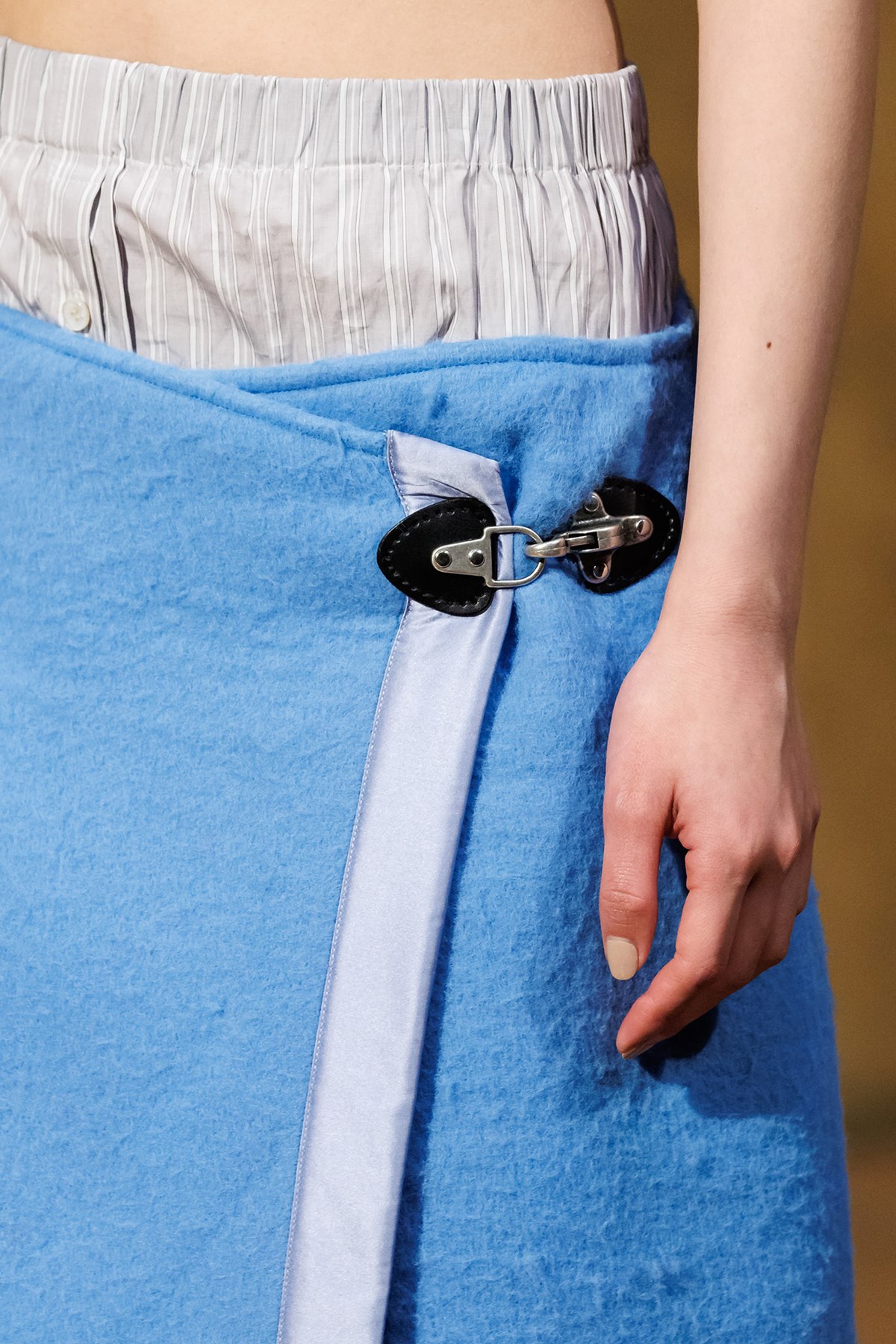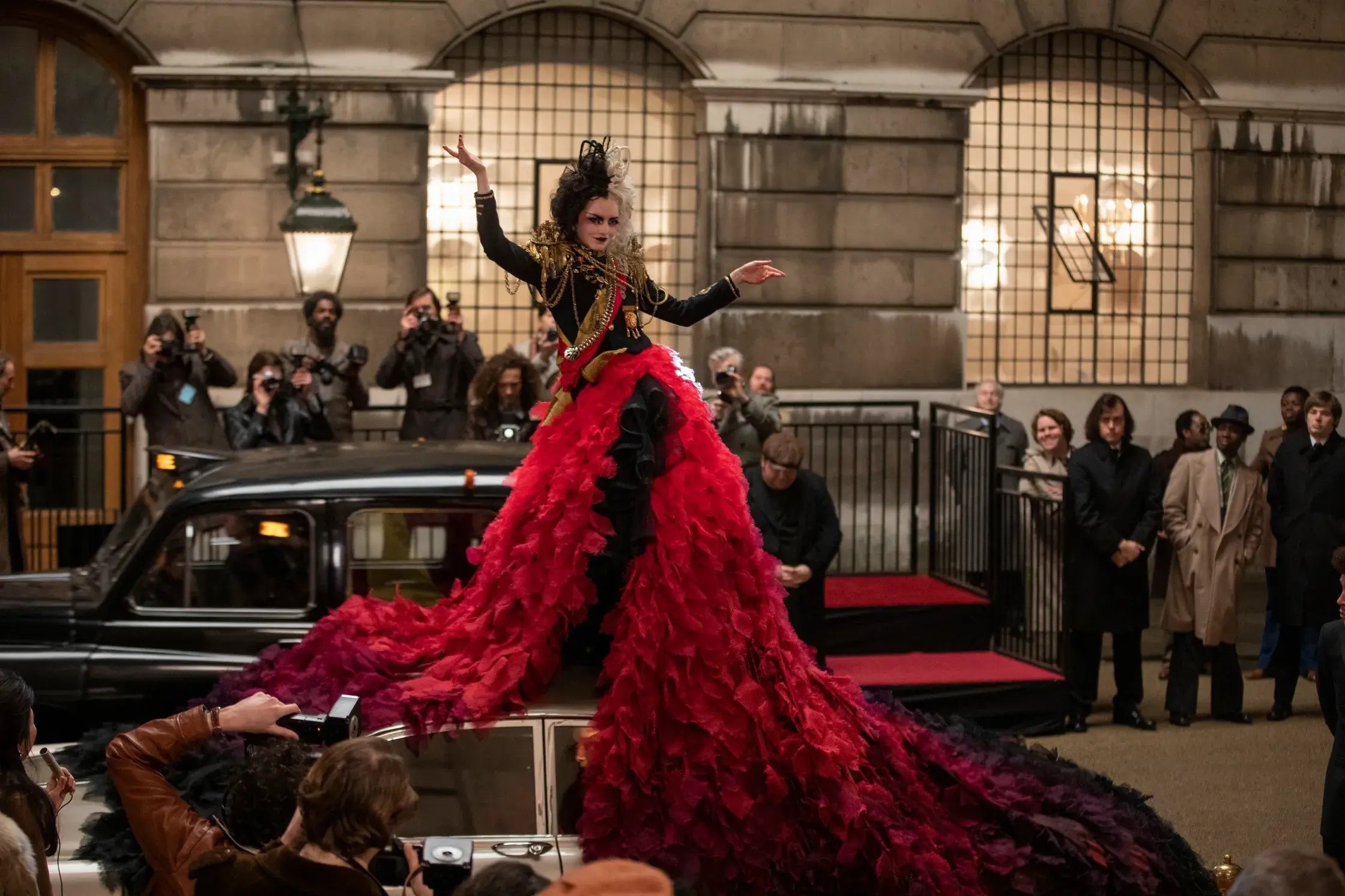
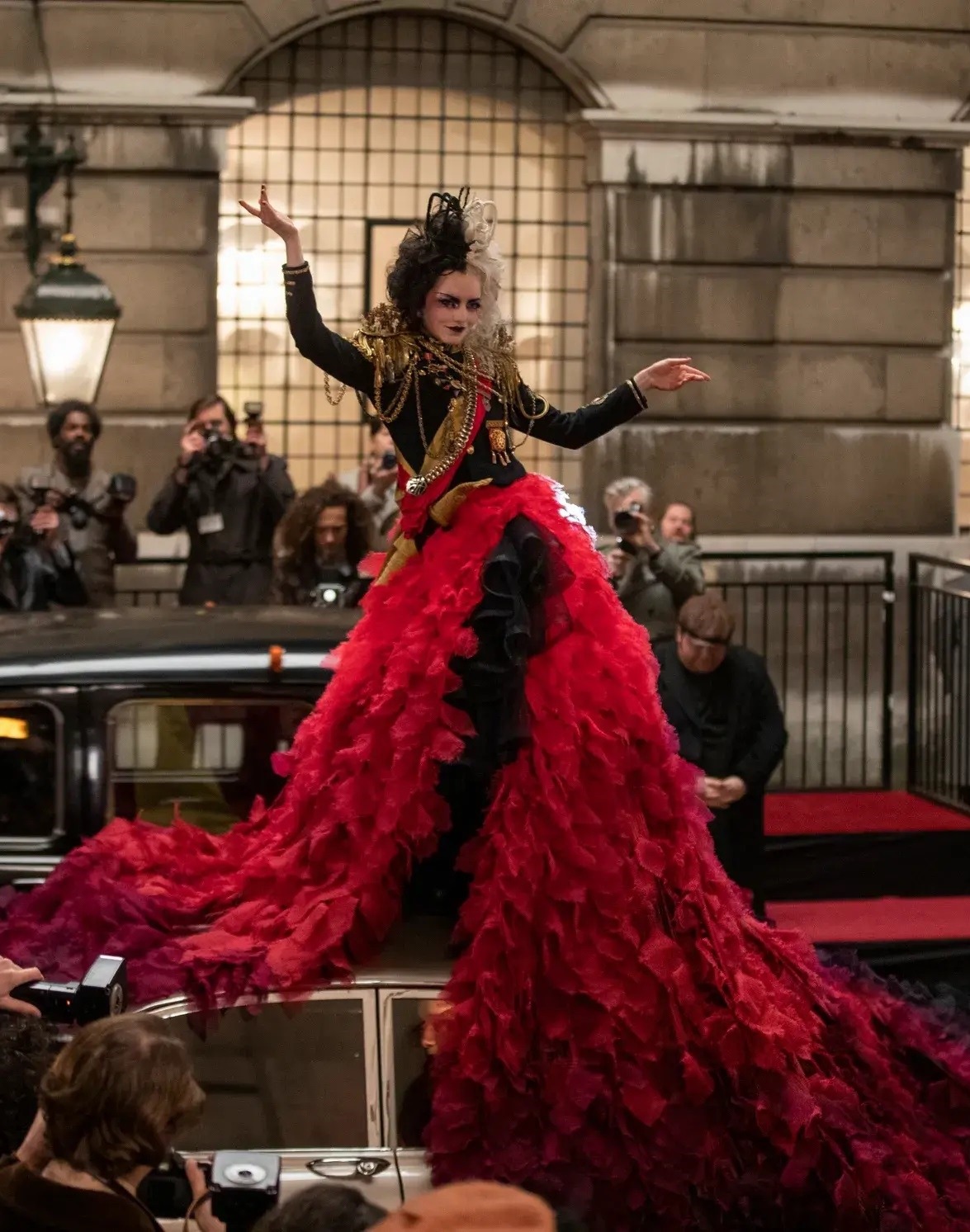
While the wardrobes of cinematic “good guys” tend to play it safe so as not to taint their moral purity, antiheroes often boast a distinctive style that captivates audiences and inspires trends beyond the screen. Why is it that villains are usually the most stylish characters in film?
Even today, when my mother recalls how I watched Snow White and the Seven Dwarfs every morning as a little girl, her eyes light up. As she travels back through the stories of my childhood, her voice flutters with joy, her words bouncing like on a trampoline of pride, the way mothers do when they talk about their daughters. She says that every morning, as if for the first time, I would sit cross-legged on the carpet just a meter from the television, staring hypnotically at the screen. According to her, the world could have fallen apart around me and I would not have noticed. What she doesn’t know, or perhaps just pretends not to know, is that the timid girl with the red bow in her hair who sang to birds, squirrels, and raccoons didn’t interest me all that much. The reason for my ritual morning devotion was the Evil Queen, that vain lady in a purple gown with a dramatic collar and a pendant on her chest who spent her free time talking to a mirror and mixing poisons, and who, by all appearances, never skipped her brow shaping or manicure appointments. Though her glamorous presence appeared only briefly in the story, my eyes would light up every time she appeared. As she furiously descended the staircase of her castle, her cloak’s red lining swirling ominously in the dark, her presence filled me with both fear and admiration. She was sensational.
The flawless makeup, peach-toned manicure, and theatrical outfit embodied her unwavering composure, grace, and coldness, but beyond her fashion sense, they told a story of her authority, discipline, and status. My four-year-old self intuitively sensed her importance, though I knew nothing then about costume design or the power of visual storytelling. I didn’t know that a costume builds character or that it serves as one of the key elements of a film’s narrative, a tool that helps us form an impression of the characters by visually presenting their ambitions, struggles, personalities, or place in society. I would come to those realizations later on, along with the understanding that my fascination with the Evil Queen’s image over Snow White’s girly outfit was no coincidence. On screen, even in animated films, the “bad girls” are simply more stylish.
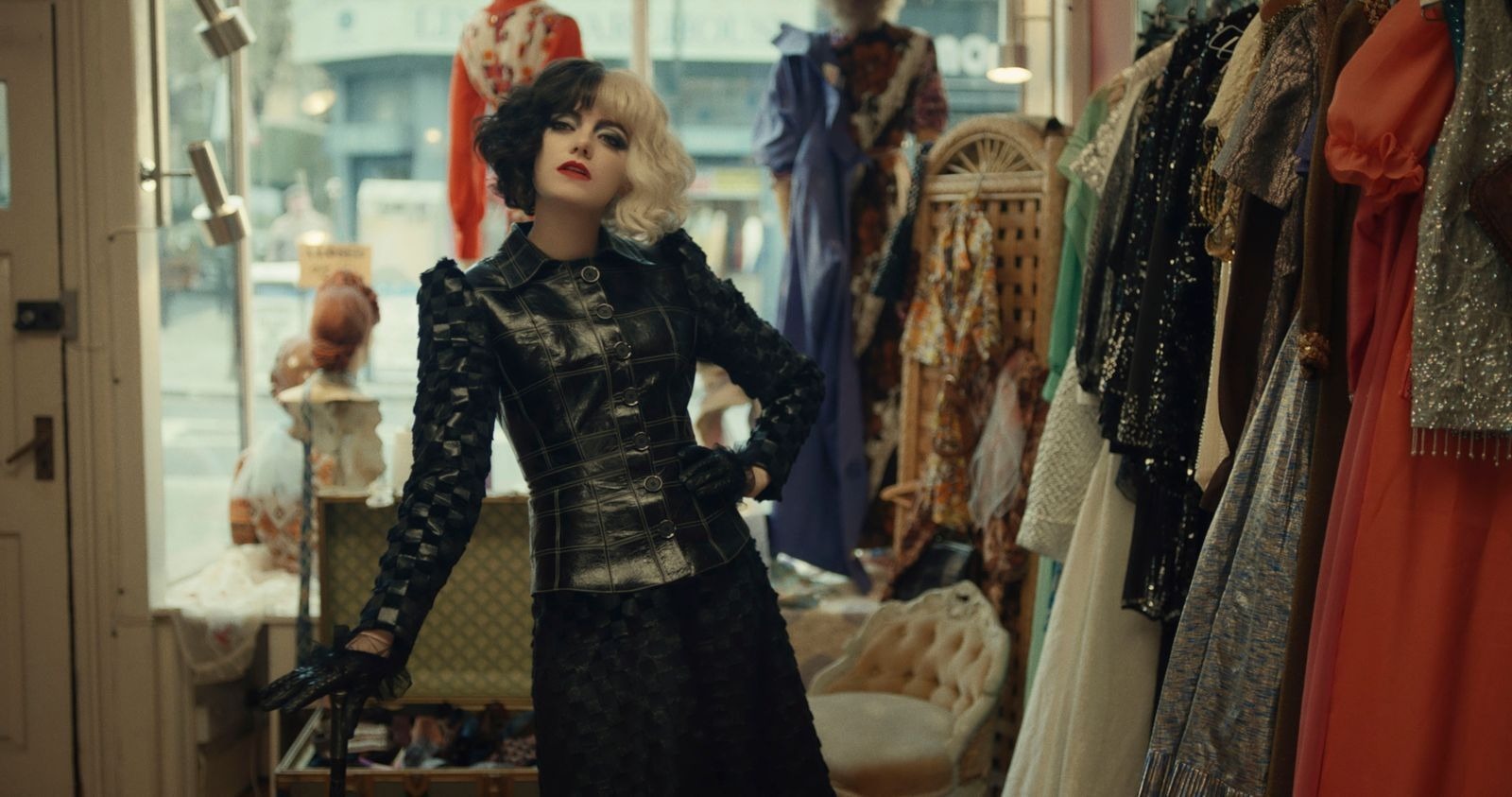
Unlike superheroes who often save the world in overly tight suits of questionable aesthetic value, or choose outfits that never conflict with the moral purity of their intentions, antiheroes and villains proudly display the full splendor and superiority of their style. Cruella de Vil, portrayed by Emma Stone in the 2021 adaptation, is a quintessential example of the fashion dominance of cinematic villainesses. Three-time Oscar-winning costume designer Jenny Beavan turned Estella’s transformation into Cruella into a true fashion spectacle. Simple combinations were replaced with blood-red gowns, show-stopping coats, fitted blazers lavishly adorned with epaulets and brooches, and breathtaking creations such as a skirt covered in thousands of hand-sewn petals or a couture dress made from a massive pile of textile waste transformed into a dramatic train. The story is set during London’s punk revolution of the seventies, so Cruella’s looks draw inspiration from the designs of Vivienne Westwood, the expressive style of German musician Nina Hagen, and Alexander McQueen. Yet Cruella’s anti-establishment style is more than a reflection of her era; it is a declaration of her character. Her eccentricity mirrors her defiance. This privilege of rebelliousness shared by antiheroines is also evident in the rave-punk-DIY style of Harley Quinn, played by Margot Robbie in Suicide Squad. Her fashion chaos is a manifestation of her inner turmoil, and it would be entirely unacceptable for her to look any other way.
Related: 5 phenomenal Emma Stone movie costumes that live in my mind rent-free

Film villains often embody style because they are written as confident, charismatic, and complex characters, while costume designers use their wardrobes to visually distinguish them from the heroes. Their fashion represents a departure from the ordinary, allowing them to embody the forbidden, which is why their distinctive looks often become iconic. Unlike morally upright protagonists, whose clothing usually reinforces their “goodness,” antiheroes have the privilege of breaking every norm and rule, both moral and sartorial. Like their personalities, their costumes reflect a readiness to reject all conventions. They do not care whether they belong or whether the audience will love them, and that freedom is precisely why they end up looking so impossibly good. Still, film antiheroes do not always need to look eccentric for their costumes to perfectly reflect their character.
Their relentlessness, perfectionism, and expertise are sometimes mirrored in meticulous styling that visually communicates dominance, confidence, and a sense of control. The wardrobe of the uncompromising editor Miranda Priestly in The Devil Wears Prada is the very definition of power dressing. The palette of luxurious brands and materials she selects, wearing only pieces that fit flawlessly, amplifies her authoritative presence and her need for everything in her life to be polished to perfection. Her coldness is part of her uniform. The same calculated nature and unshakable determination define Agent Smith, who in The Matrix looks remarkably stylish in his sharply tailored black suit and ever-present sunglasses. The refined exterior obsessively maintained by successful banker Patrick Bateman in American Psycho is the perfect façade for his dark, psychopathic nature. Though his perfectly pressed suits make him look like a model in a men’s shirt catalog, his hyper-stylization serves to create a false sense of control—a mask a narcissist builds in the face of inner chaos. Just as in real life, a flawlessly tailored suit creates an impression of authority, expertise, and even a slightly menacing, inhuman infallibility. The mesmerizing polish of antiheroes thus functions as either a disguise concealing internal turmoil or a visual signal of their manic perfectionism, utterly devoid of empathy and focused solely on the mission. As much as their personas may terrify us, there is no denying that they look spectacular.
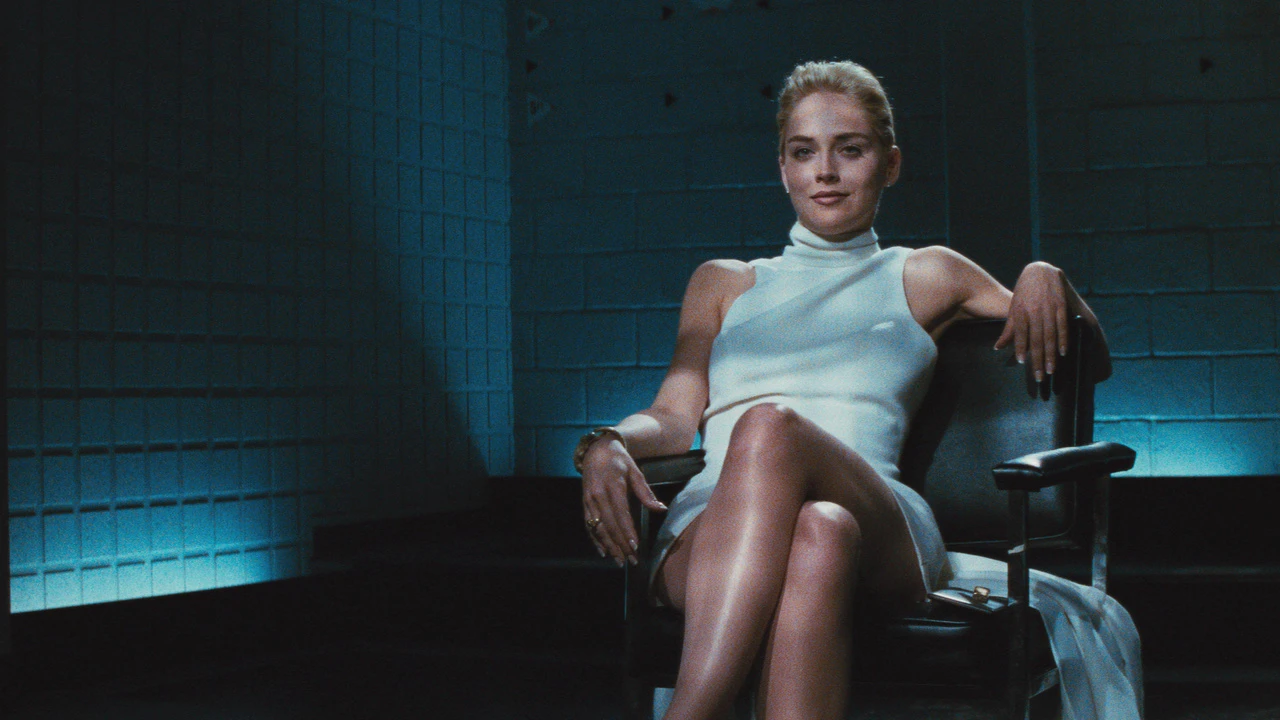
But when we dig a little deeper, it is impossible not to mention another reason why film villains are more stylish than the good guys. The dichotomy of attraction and danger is deeply rooted in human psychology: what poses a threat can also be alluring, a truth we often recognize both in our own lives and on screen. Costume design amplifies this timeless tension, presenting us with characters we should avoid but who captivate us so completely that we are willing to forgive their flaws and justify their malicious intentions. Grace Jones as May Day in A View to a Kill (1985) and Sharon Stone as Catherine Tramell, the ultimate femme fatale in Basic Instinct, are prime examples of antagonists whose allure is undeniable and whose impeccable outfits (or lack thereof) perfectly complement their image as irresistible seductresses.
What is forbidden often carries an intoxicating charm. When Bonnie and Clyde premiered in 1967, a wave of robbery attempts swept across the United States like a tsunami. But beyond the surge in crime, the film had a massive impact on fashion and style: hair salons were suddenly filled with women asking for the neat bob haircut worn by Faye Dunaway as Bonnie Parker, complete with a neck scarf and beret. The film was criticized for romanticizing Bonnie and Clyde’s relationship and downplaying their crimes, but audiences hardly cared. Instead of condemning their actions, they adored them to the point of imitation, even if only through clothes and hairstyles. The infamous outlaws were so effortlessly cool and stylish that, more than half a century later, they remain enduring fashion icons.
Related: 7 films in which Sharon Stone shattered taboos and redefined female sexuality
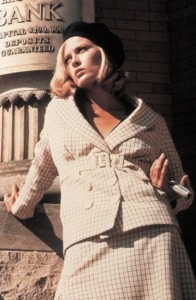
Bonnie & Clyde 1967, Getty Images
Whether their style reflects the privilege of defiance and rule-breaking, conveys dominance and authority, hides a fractured state of mind beneath a perfectly polished exterior, or simply looks so good that it awakens in us the thrill of “forbidden” attraction born from danger, villains are without question the most stylish characters on screen. Although they may not be model citizens and certainly should not be imitated in life choices, there is still something to learn from them: whatever we choose to wear, the most important thing is to wear it with confidence. After all, that is the secret ingredient to why they look so good.
Cover photo: Courtesy of Disney


